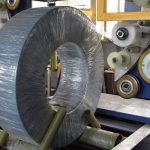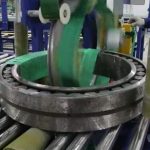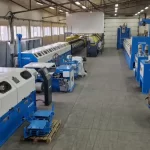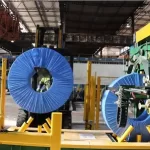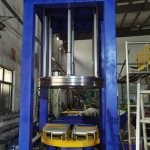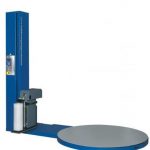Labor Challenges in Steel Coil Packaging and Automation Solutions
- Labor Challenges in Steel Coil Packaging and Automation Solutions
- 1. The Physical Demands of Manual Labor in Steel Coil Packaging
- 2. Packaging Inconsistencies and Errors
- 3. Time-Consuming and Inefficient Processes
- 4. Workplace Safety Risks
- 5. Labor Shortages and Workforce Challenges
- 6. High Labor Costs and Limited Scalability
- 7. Maintaining Packaging Quality and Consistency
- 8. Long Cycle Times Impacting Production Throughput
- 9. Real-Time Monitoring and Data Insights
- 10. Meeting Customer Expectations with Advanced Automation
- Conclusion
In the steel industry, coil packaging plays a critical role in ensuring that steel coils are properly prepared for transport and storage. Given the heavy weight and large dimensions of steel coils, packaging them can be a labor-intensive process that often involves manual handling, wrapping, and strapping. The combination of manual work and the physical demands of the job presents several labor challenges that can affect the efficiency, safety, and cost of operations.
As the demand for steel increases globally, so do the expectations for faster production and better packaging standards. This growing demand has made it clear that traditional, labor-intensive packaging processes are no longer sustainable. To combat these challenges, the industry is gradually turning towards automation solutions that can revolutionize the packaging process. In this article, we will explore the key labor challenges in steel coil packaging and how automation can address these issues while improving overall operational efficiency.
1. The Physical Demands of Manual Labor in Steel Coil Packaging
Handling steel coils is a tough job. Coils can weigh anywhere from a few hundred kilograms to several tons, making manual labor a strenuous and sometimes dangerous task. Workers are required to physically lift, position, and secure the coils, which can lead to serious health risks, such as muscle strains, back injuries, and joint problems. Over time, this not only impacts the well-being of workers but also leads to lost productivity due to employee absenteeism and medical costs.
Heavy lifting, awkward postures, and repetitive movements are all part of the daily routine for workers involved in the packaging process. This makes it difficult to maintain high levels of consistency and speed, as workers may experience fatigue or be forced to take breaks to prevent injuries. Moreover, labor shortages and an aging workforce exacerbate the problem, as there are fewer workers available to take on such physically demanding jobs.
Solution: Automating the handling and movement of steel coils through technologies like robotic arms and conveyors can significantly reduce the need for manual labor. These systems are capable of lifting, positioning, and rotating coils with precision, eliminating the risks associated with manual handling and improving the overall safety of the workplace.
2. Packaging Inconsistencies and Errors
When packaging is done manually, there is always the potential for human error. Workers may apply wrapping or strapping inconsistently, leading to improperly secured coils that could shift or get damaged during transportation. Mistakes such as uneven tension in straps or inadequate wrapping can compromise the protection of the coils, resulting in costly product returns, customer dissatisfaction, and potential reputational damage.
Manual processes also lack the precision and uniformity required for high-quality packaging. Variability in the quality of packaging can create inconsistencies from one product to the next, making it difficult to meet strict industry standards and customer requirements. Additionally, in large-scale production, human error can accumulate over time, leading to increased material waste and higher packaging costs.
Solution: Automation offers a solution by standardizing the packaging process. Automated coil wrapping machines and strapping systems apply consistent tension and wrapping material to each coil, ensuring uniform packaging across the board. By eliminating human error, automated systems improve the reliability and quality of packaging, reducing waste and boosting productivity.
3. Time-Consuming and Inefficient Processes
Manually packaging steel coils is not only labor-intensive but also time-consuming. Workers must go through multiple steps, including moving the coils into position, applying protective materials, securing them with straps, and preparing them for transport. This manual process can take a significant amount of time, slowing down production lines and limiting the number of coils that can be packaged in a given shift.
In an industry where speed and efficiency are crucial to meeting customer demands, slow packaging processes can lead to production bottlenecks. Extended cycle times mean that fewer coils are packaged, and the overall throughput is reduced, which can directly impact revenue and customer satisfaction. Inefficient processes can also lead to unnecessary delays, especially during peak production times, when the demand for steel is at its highest.
Solution: Automated systems can drastically reduce the time it takes to package steel coils. Automated coil turntables, conveyors, and high-speed wrapping machines streamline the entire process by moving coils through each stage of packaging seamlessly. With the ability to wrap and strap coils in a matter of seconds, automation allows companies to package more coils in less time, significantly improving throughput and efficiency.
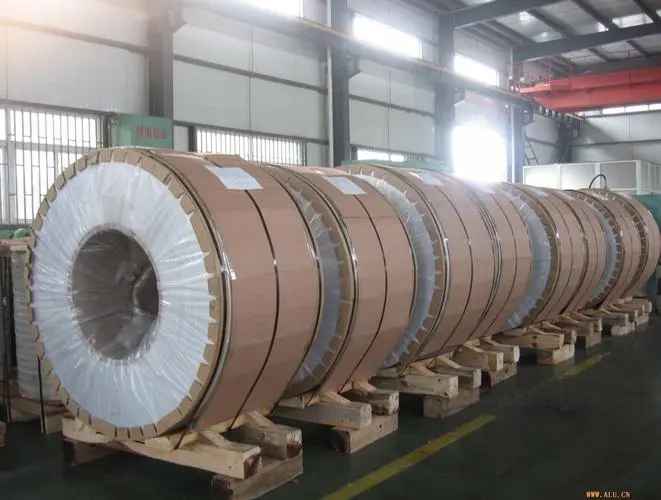
4. Workplace Safety Risks
The nature of steel coil packaging poses several workplace safety risks. Given the size and weight of the coils, there is always the potential for accidents, such as coils tipping over, improper lifting techniques, or workers being struck by moving equipment. Handling such heavy materials in confined spaces also increases the risk of pinching, crushing, or falling hazards, which can result in severe injuries or even fatalities.
Maintaining a safe work environment in industries that involve heavy materials is an ongoing challenge. Safety incidents not only put workers at risk but also lead to downtime, legal liabilities, and increased insurance costs. Additionally, frequent workplace injuries can harm employee morale, further contributing to labor shortages as fewer workers are willing to take on hazardous jobs.
Solution: Automation is key to improving workplace safety. Robotic handling systems, automated down-enders, and palletizers reduce the need for workers to physically interact with heavy steel coils, minimizing the risk of injury. Automated packaging equipment is also equipped with safety sensors and emergency stop mechanisms, ensuring that machines can be stopped quickly if a potential hazard is detected. By eliminating the manual handling of coils, companies can create a safer work environment while reducing safety-related downtime.
5. Labor Shortages and Workforce Challenges
The steel industry, like many manufacturing sectors, is facing a significant labor shortage. An aging workforce, combined with a declining interest among younger generations to pursue careers in manual labor, has made it difficult for companies to find and retain skilled workers. This shortage puts additional pressure on existing employees, who are often required to work longer hours to meet production demands.
As the global demand for steel continues to grow, the availability of skilled workers is not keeping pace, leading to increased labor costs and a reliance on overtime. In some cases, companies are forced to turn to temporary or unskilled labor, which can result in lower productivity and higher error rates. Without a steady and skilled workforce, it becomes challenging to maintain consistency and quality in packaging processes.
Solution: The use of automated packaging solutions addresses labor shortages by reducing the need for human intervention in the packaging process. By automating repetitive and labor-intensive tasks, companies can continue to meet production demands even with a smaller workforce. Automation also enables companies to focus on training employees for higher-value tasks, such as machine supervision and maintenance, rather than relying on manual labor for packaging operations.
6. High Labor Costs and Limited Scalability
The high cost of manual labor is a pressing challenge for steel coil packaging operations. With labor-intensive processes, companies face rising labor costs, especially as wages increase to attract skilled workers. Moreover, relying on a large workforce to manually handle packaging limits the ability to scale production efficiently.
As demand grows, adding more workers to the line might seem like a temporary solution, but this approach can quickly become unsustainable. Not only do higher labor costs eat into profits, but the inefficiency of manual work also restricts the ability to respond to surges in production demand. This results in bottlenecks and reduced profitability.
Solution: Automating steel coil packaging offers a cost-effective and scalable solution. By investing in automated coil wrapping machines, robotic arms, and automatic conveyors, companies can significantly reduce their dependence on manual labor while increasing production capacity. With automation, the packaging process becomes more flexible, allowing manufacturers to handle higher volumes without the need for additional labor.
Automation also reduces labor-related costs such as overtime pay, health benefits, and workplace injuries, providing long-term savings that enhance ROI.
7. Maintaining Packaging Quality and Consistency
Packaging quality is crucial for steel coil manufacturers, as poorly packaged coils are more susceptible to damage during transportation and storage. Consistency is key, and human-operated systems often lack the precision needed to meet strict quality standards. Even slight variations in packaging—whether it’s uneven wrapping or loose strapping—can compromise the protection of the coils and lead to significant financial losses due to product damage or customer dissatisfaction.
Maintaining high levels of consistency and quality control across hundreds or thousands of coils is a constant challenge for manual laborers, especially in high-pressure production environments where fatigue can cause mistakes.
Solution: Automated packaging equipment ensures consistent quality across the board. Machines like automatic strapping systems and high-speed wrapping machines are designed to apply uniform tension to straps and wrapping materials, ensuring that each coil is securely packaged. This consistency reduces the risk of damage and improves the overall integrity of the packaging.
Automated quality control systems can also be integrated into the process to inspect packaging in real-time, identifying potential issues and making corrections before coils are shipped. This helps to uphold high-quality standards while minimizing waste.
8. Long Cycle Times Impacting Production Throughput
One of the biggest challenges of manual packaging is the long cycle times required to package each steel coil. Manual processes involve multiple steps, including coil positioning, wrapping, strapping, and palletizing, all of which take time to complete. Longer cycle times mean fewer coils can be processed in a given shift, leading to reduced production throughput.
As manufacturers strive to meet growing demand, slow packaging lines can create bottlenecks that impact the entire production cycle, causing delays in shipment and increasing lead times for customers. This not only affects the company’s ability to meet deadlines but also reduces overall profitability.
Solution: Automation can dramatically reduce cycle times, speeding up the entire packaging process from start to finish. High-speed automated systems can package coils in seconds, allowing for a significant increase in throughput without compromising quality.
For example, automated palletizers can stack and secure coils much faster than manual laborers, and conveyor systems can transport coils between stages at optimized speeds. By reducing cycle times, companies can process more coils per shift, improving overall productivity and ensuring that deadlines are met.
9. Real-Time Monitoring and Data Insights
In manual steel coil packaging processes, it’s difficult to monitor and optimize performance in real-time. Without accurate data on packaging speed, material usage, and equipment performance, manufacturers may struggle to identify inefficiencies and make informed decisions about process improvements.
This lack of data visibility also affects maintenance schedules. Without real-time information on machine health, equipment failures can go unnoticed until they lead to costly downtime and repairs.
Solution: Automated systems equipped with IoT sensors and data tracking tools allow manufacturers to monitor packaging operations in real-time. These systems collect valuable data on production speed, material consumption, and machine performance, providing actionable insights that can help optimize the process.
With this data, companies can identify inefficiencies, adjust machine settings, and ensure that all aspects of the packaging process are running at peak efficiency. Real-time monitoring also enables predictive maintenance, allowing manufacturers to detect and resolve issues before they lead to major breakdowns, thus reducing downtime and maintenance costs.
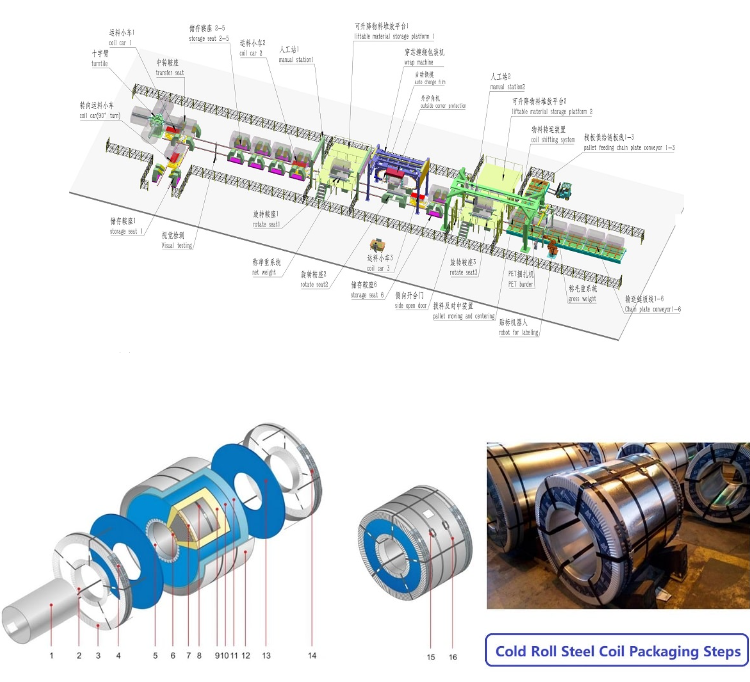
10. Meeting Customer Expectations with Advanced Automation
Customer demands are constantly evolving, with increased expectations for fast delivery, high-quality packaging, and on-time shipments. Companies that rely on labor-intensive manual processes often struggle to meet these expectations, resulting in late deliveries, inconsistent packaging quality, and dissatisfied customers.
In today’s competitive market, failure to meet customer expectations can lead to lost business and damage to the company’s reputation. Customers expect consistent packaging that protects the product during transport, and any deviation from these standards can result in returns, increased costs, and negative reviews.
Solution: Automation solutions not only streamline the packaging process but also ensure that customer expectations are consistently met. With automated packaging systems, manufacturers can guarantee faster order fulfillment and consistent product protection—both of which are critical to maintaining customer satisfaction.
Advanced automation solutions, such as digital twins and robotic process automation, allow companies to simulate and optimize their operations before production begins. This helps ensure that the entire packaging process is efficient and error-free, allowing manufacturers to meet customer demands without compromising on quality.
Conclusion
The challenges posed by manual labor in steel coil packaging are numerous and significant. From physical demands and safety risks to rising labor costs and inconsistencies in packaging quality, traditional methods are becoming increasingly difficult to sustain. However, the good news is that automation provides effective solutions to these problems.
By implementing automated systems, manufacturers can reduce labor costs, improve safety, increase productivity, and deliver consistent, high-quality packaging. The integration of technologies such as robotic arms, automated strapping machines, high-speed wrapping systems, and real-time monitoring tools allows companies to streamline operations, maximize throughput, and meet the growing demands of customers.


